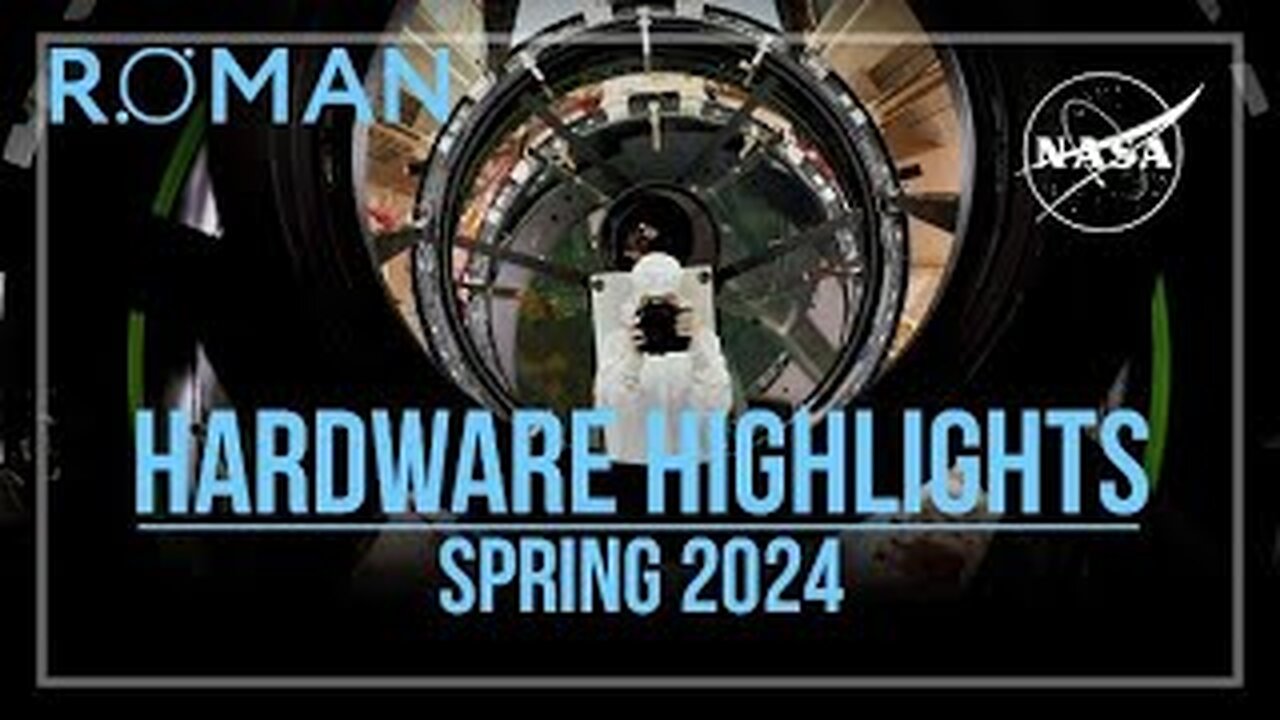Premium Only Content

NASA's Roman Space Telescope Hardware Highlights: Spring 2024
Every day, the Nancy Grace Roman Space Telescope moves closer to completion. This video highlights some of the important hardware milestones from part of this journey. Components and systems are built separately, tested, and then integrated with larger parts of the spacecraft to carefully build the full telescope. Roman’s foundation is the primary structure, or spacecraft bus, which houses electronics and support systems. Like the chassis of a car, everything is built up from this aluminum hexagon.
This video, covering the spring of 2024, opens with NASA’s Goddard Space Flight Center’s integration and testing complex. The flight versions of the Solar Array Sun Shield panels are unpacked in Goddard’s largest clean room and placed into special racks to safely hold them. Multiple copies of hardware often exist, most for testing purposes; flight hardware is the version that will actually fly in space on the final spacecraft. The flight solar panelsarrays are the only ones covered with delicate solar cells. The Outer Barrel Assembly, also flight hardware, arrives at Goddard and is unpacked from its shipping container. This structure will surround and protect Roman’s primary mirror from stray light. Fitted to the front of the spacecraft, the Deployable Aperture Cover is another element of light protection. It will cover the aperture during launch and then deploy in space to shield the aperture from sunlight. To ensure that it is ready, engineers deploy it in a large thermal vacuum chamber. Once the hardware is deployed, the chamber will evacuates all the air and generates high and low temperature extremes to simulate the conditions in space. The Wide Field Instrument is Roman’s primary instrument and will capture enormous images of distant objects. Assembled by BAE Systems in Colorado, it undergoes environmental testing at their facilities, proving that it can function in space, before traveling to Goddard for integration with the rest of the spacecraft. The Coronagraph Instrument, a technology demonstration that will be able to directly image planets outside our solar system, was developed and built at JPL in California. After comprehensive testing there, JPL carefully transportsed the Coronagraph across the country to Goddard, where a team of JPL and Goddard engineers carefully unpacked it and performed a thorough inspection as well as continued testing. Finally, the Optical Telescope Assembly is a combination of the 7.9- foot (2.4- meter) primary mirror, the smaller secondary mirror, and many additional optical elements designed to direct the focused beam of light to Roman’s two instruments. The assembly was built at L3Harris in New York and went through testing at their facilities in preparation for sending it to Goddard. The Optical Telescope Assembly will be the last major piece of hardware to arrive at Goddard this fall.
Launching no later than May 2027, Roman is NASA’s next flagship astrophysics mission. An infrared survey telescope with the same resolution as Hubble but at least 100 times the field of view, Roman is being built and tested at NASA’s Goddard Space Flight Center in Greenbelt, Maryland. Partners from around the globe are contributing to this effort.
Launching no later than May 2027, Roman is NASA’s next flagship astrophysics mission. An infrared survey telescope with the same resolution as Hubble but at least 100 times the field of view, Roman is being built and tested at NASA’s Goddard Space Flight Center in Greenbelt, Maryland. Partners from around the globe are contributing to this effort.
-
 LIVE
LIVE
I_Came_With_Fire_Podcast
13 hours agoMy EURO Divorce | HOGG with a side of PAC | Foreign FUNDS Fudged
260 watching -
 37:44
37:44
Glenn Greenwald
9 hours agoGlenn On Tearing Down the Military Industrial Complex, Exposing Pro-Israel Indoctrination, and More | SYSTEM UPDATE #411
80.6K93 -
 4:04:20
4:04:20
Nerdrotic
8 hours ago $42.13 earnedAmazon Takes 007! Hollywood is Lost, Disney Cancels WHO? | Friday Night Tights 342 /w ItsAGundam
142K27 -
 43:27
43:27
Tucker Carlson
8 hours agoRay Dalio: America’s Hidden Civil War, and the Race to Beat China in Tech, Economics, and Academia
136K166 -
 56:56
56:56
Candace Show Podcast
8 hours agoEXCLUSIVE: Taylor Swift Will Be Deposed. | Candace Ep 150
133K135 -
 1:03:52
1:03:52
IsaacButterfield
5 hours ago $2.28 earnedRepublican Vs 25 Transgender Activists | Jewish Outrage | Lizzo Loses All the Weight
29.9K8 -
 1:10:23
1:10:23
Edge of Wonder
9 hours agoChinese Biochips Hacking Minds? Quantum Control & Journey Song Mandela Effect
60K7 -
 2:15:46
2:15:46
Quite Frankly
12 hours ago"Ghosts, Robotics, and OBE's" ft. Dr. Albert Taylor 2/21/25
57.9K17 -
 55:52
55:52
LFA TV
1 day agoMaking Germany Great Again | TRUMPET DAILY 2.21.25 7PM
39.1K8 -
 1:52:26
1:52:26
2 MIKES LIVE
8 hours ago2 MIKES LIVE #183 Open Mike Friday with Hannah Faulkner and Adelia Kirchner!
28K